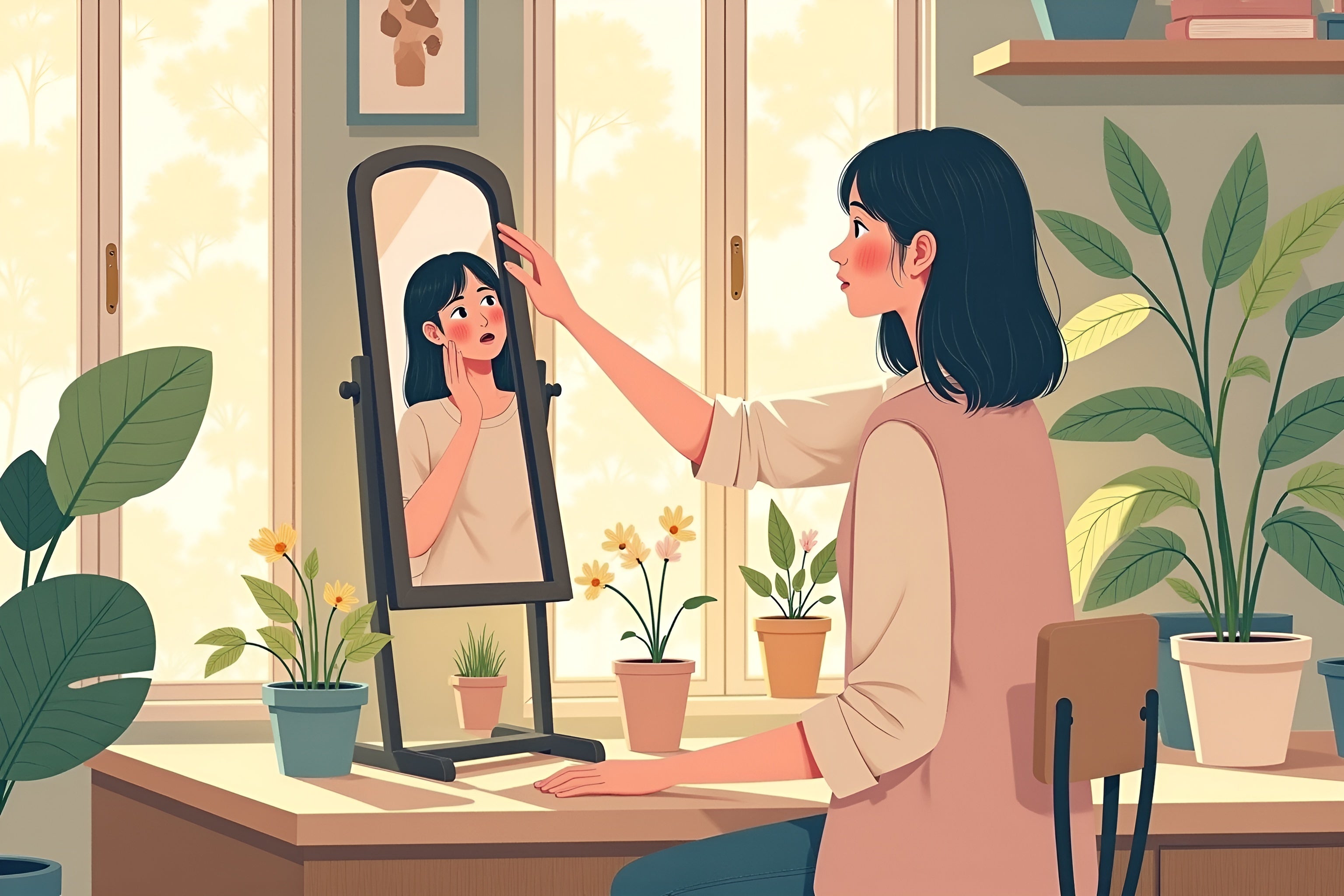10-minute read
How many times have you been told, "just be yourself"? Probably quite a few. And how many times have you actually tried—and succeeded—without feeling awkward, vulnerable, or like you’re walking into a room wearing your emotions on your sleeve? Yeah, not so easy. Between societal pressures, fear of judgment, and the constant need to "fit in," being your authentic self can feel more like a challenge than a simple choice. Whether you’re constantly people-pleasing, watering yourself down, or just unsure of who you really are, this guide dives into why we hide parts of ourselves and how to start embracing the real you.
The Judgment Trap: Why We Hide Our True Selves
From a young age, we’re taught to seek approval. Whether it’s from parents, teachers, friends, or even strangers online, the desire to be accepted runs deep. But the downside? We start molding ourselves to fit what others expect—suppressing the parts that feel "too much," "too weird," or just "different." But those parts we hide? They’re the pieces that make us whole. They’re the quirks, passions, and imperfections that form our authentic selves—the parts that deserve to be seen, not buried. And if people don’t vibe with your little quirks, well, maybe they’re just not your people—and that’s perfectly okay.
So Why Do We Fear Judgment:
-
Social Conditioning: We’re wired to want to belong, and standing out can feel like a risk.
-
Past Experiences: Maybe you were criticized or rejected for being yourself in the past, so now you hold back.
-
The Comparison Trap: Constantly measuring yourself against others (thanks, social media) can make you doubt your worth.
Breaking Free from People-Pleasing
People-pleasing might seem harmless, but over time, it can leave you feeling exhausted, resentful, and disconnected from who you are. Saying yes when you mean no? Constantly putting others’ needs before your own? Yeah, we’ve all been there.
Maybe you’ve said yes to dinner plans when all you wanted was to be in your pajamas by 8 PM. Or you laughed at a joke that wasn’t even funny because you didn’t want to seem rude. Maybe you even pretended to like a hobby just to fit in—and now you’re stuck in a weekly knitting club wondering how you got there. All that, only to be haunted later by those cringy flashbacks and that lingering question: Why did I even do that? And honestly? If they couldn’t handle the real you—well, that’s their problem. Their loss for missing out on your awesome, unfiltered self.
Signs You’re Stuck in People-Pleasing Mode:
-
You avoid conflict at all costs, even when it means compromising your values.
-
You feel guilty when you prioritize your own needs.
-
You say yes out of obligation, not because you genuinely want to.
How to Break Free:
-
Start Small: Practice saying no in low-stakes situations. It’s like building a muscle—the more you do it, the easier it gets.
-
Check In With Yourself: Before agreeing to something, pause and ask, "Do I really want to do this?"
-
Set Boundaries: Communicate your limits clearly and without over-explaining. "I can’t commit to that right now" is a full sentence.
Steps to Become More Comfortable in Your Own Skin
Authenticity isn’t about being perfect—it’s about being real. Embracing your true self means getting comfortable with the messy, imperfect parts too. Because guess what? That’s what makes you human.
Practical Steps to Embrace the Real You:
-
Identify what’s authentic to you: What lights you up? What feels genuine versus forced? Take time to explore your interests, values, and passions. For example, maybe you’ve always loved painting, but stopped because you thought it wasn’t "practical." Picking up that paintbrush again might reconnect you with a part of yourself you’ve been missing.
-
Let go of perfectionism: Perfection is overrated (and impossible). Allow yourself to make mistakes and learn from them. Letting go of perfectionism might look like finally sharing that imperfect drawing you’ve been hiding, or cooking a new recipe even if it’s not Instagram-worthy. It’s about embracing the messy process, knowing that real growth happens when things don’t go perfectly—and realizing that’s totally okay.
-
Surround yourself with supportive people: Find friends, communities, or spaces where you feel safe being yourself. Imagine sharing your love for quirky indie films with a group of people who actually "get it" instead of pretending to love the latest blockbuster just to fit in.
-
Practice self-compassion: Be gentle with yourself on the journey. It’s okay to feel vulnerable or unsure—it’s all part of the process. Think about those moments when you’ve stumbled—instead of beating yourself up, treat yourself like you would a friend: with kindness and understanding.
Real Talk: You Deserve to Be Fully You
Being yourself is a journey, not a destination. It’s about peeling back the layers of expectations and rediscovering who you’ve always been beneath them. The world doesn’t need a watered-down version of you—it needs the real, unfiltered, beautifully imperfect you. So go ahead, take up space, speak your truth, and live unapologetically.
References & Disclaimer
-
Brown, B. (2012). The Gifts of Imperfection. Penguin Random House.
-
Journal of Personality and Social Psychology (2020). The Impact of Authenticity on Mental Well-being.
This content is for informational purposes only and does not constitute medical, psychological, or professional advice. If you’re struggling with self-identity or mental health, consult a licensed professional.




